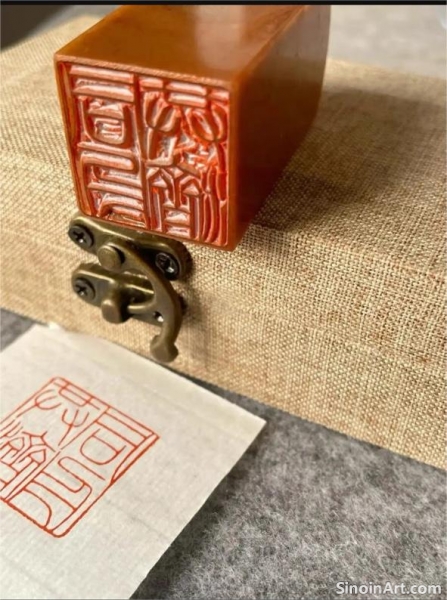Famous Seal Carvers and Their Legacy: Masters of Zhuanke
|
The history of zhuanke is rich with the contributions of master seal carvers who have pushed the boundaries of this art form. These artists, renowned for their technical skill, artistic innovation, and unique styles, have left an indelible mark on the tradition of name seal carving. Many of these masters are held in high esteem by the art community, and still continue to inspire carvers today.  Among the most celebrated seal carvers is Zhao Zhiqian (趙之謙), a Qing Dynasty artist known for his innovative use of seal script and his mastery of both carving and calligraphy. His dynamic compositions and expressive lines greatly influenced later seal carvers. He is considered one of the great masters of seal carving.  Wu Changshuo (吳昌碩), another prominent seal carver of the Qing Dynasty, is renowned for his bold and powerful style. His seals are characterized by their strong lines and vigorous energy, reflecting his mastery of the craft. He is still considered one of the great masters of carving, and his works continue to inspire new artists.  Qi Baishi (齊白石), a renowned painter and seal carver of the 20th century, is known for his distinctive and expressive style. His seals are characterized by their simplicity and directness, often incorporating folk motifs and imagery. Qi Baishi brought a new style to seal carving, influenced by folk art traditions. These artists, along with many others, have shaped the tradition of zhuanke, pushing the boundaries of artistic expression and technical innovation. Their works continue to inspire contemporary seal carvers and serve as a testament to the enduring power and beauty of this ancient art form. Their legacy is continued through their surviving works and influence on current artists. The study of these master seal carvers is essential for any serious student of zhuanke. Their works provide invaluable insights into the techniques, aesthetic principles, and cultural significance of seal carving. They represent the heights of artistic expression within the art, and continue to be valuable to contemporary carvers. |
Tag : Famous Seal Carvers, Zhuanke Masters, Chinese Calligraphy Artists, Seal Artists, Seal History
Related information
- Contemporary Studio Seal Carving: Blending Tradition and Innovation
- The Modern Practice of Chinese Seal Carving: Reimagining Tradition
- The Tools of the Trade: Essential Equipment for Seal Carving
- Design Elements of Collector's Seals: Composition and Visual Language
- The Significance of Red: The Vermilion Ink in Seal Impressions
This article discusses the current state of studio seal carving, exploring how contemporary artists are both preserving traditional techniques and innovating with new approaches, reflecting a vibrant mix of styles.
Explore the modern practice of Chinese seal carving. Discover how contemporary artists are reimagining tradition and incorporating new techniques and styles while respecting its ancient roots.
This article outlines the essential tools used by seal carvers, from the selection of chisels to the preparation of stone, explaining their specific functions and how they contribute to the finished product.
This article discusses the design elements of collector's seals, exploring how composition, borders, patterns, and pictorial elements contribute to the seal's visual language and its overall artistic impact.
This article explores the significance of the color red, specifically vermilion ink, in Chinese seal carving, highlighting its symbolism of prosperity, authority, and personal identity.